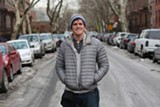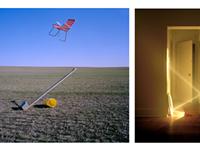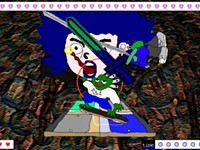[
{
"name": "500x250 Ad",
"insertPoint": "5",
"component": "15667920",
"parentWrapperClass": "",
"requiredCountToDisplay": "1"
}
]
When Brandon Stanton moved to New York City in 2010, he planned to embark on a photography project to document 10,000 people on the streets. Since then, he's added a powerful interview component, pairing each photo with quotes from that pictured individual. These stories vary from sweet accounts of how couples got together to anecdotes of devastating and unresolved loss, or moments of philosophy from strangers so profound that you bookmark them for future reference. This weekend, Stanton will give a talk on HONY during Rochester Institute of Technology's Brick City Homecoming and Family Weekend.
Stanton's blog is available on Facebook and Instagram, where it has more than 22.5 million followers. And his project is ever-evolving — he's interviewed politicians and other famous faces, created several series of photographs and interviews that reveal the unique experiences of individuals who share similar circumstances, and published his work in bestselling books. City Newspaper spoke with Stanton in advance of his Rochester visit. The following is an edited version of that conversation.
City: What does an average work day look like for you?
Brandon Stanton: It's a little different these days. I've been working on a film project for about two and a half years now. I used to interview and post about four people a day. I'm still interviewing about five to six people a day, but half of them are on film, and half are photography. I normally work a couple of shifts — I go out in the morning and do my photography, then I'll go out in the late afternoon and I will do film interviews. I've got about 1200 interviews on film now that nobody's seen before.
How will that manifest in the future?
My goal is to get a television series out of it. But that is still up in the air. I wanted to do the work first, to create this substantial collection of video interviews with random strangers on the streets of New York, which I have done. Exactly what final form that work is going to take, I have yet to decide.
The project's initial goal was to photograph strangers on the streets of NYC. Was there a particular moment where you decided to include the interviewing aspect?
That was very evolutionary and incremental. I first moved to New York with the goal of just doing a photography project, and plotting the photographs on a map. Gradually along the way I started naturally having conversations with people I was stopping to photograph. I started adding little quotes, and those quotes turned into longer quotes, which turned into full-blown interviews. I went from spending 10 seconds with someone on the street to take their photo, to now, a lot of times, I'll spend between one and two hours with them, learning their story.
You've been at this for six years now. How has your approach to approaching strangers evolved since you began?
In the beginning, if the day started with a really negative rejection, it could set the tone for the whole day. I'm not anxious about it anymore — I think being in a calm place allows you to put other people in a calm place.
For every person who agrees to open up, how many rejections do you get?
If I was to average it out, I would say one out of every three people say no. Some days it's more like 95 percent say no, and sometimes everybody says yes. There's a wide variation.
Do you have a sense of how that's changed since HONY has become so popular?
Yes. A lot more people agree to allow me to interview them because HONY is so well-known now. I would say about half the people I stop on the street have heard of it.
Do you try to draw people out if you sense they're on the fence?
I don't really have tactics for drawing people out. I go through the exact same process with everyone, which involves just listening to the person very intently and asking them questions based on my own curiosity. Anything they don't want to answer, they don't have to answer. Anything after the interview that they don't want me to include, I won't. But rarely is that agency ever exercised. One thing that's been very educational for me throughout doing HONY is just how willing people are to discuss these things.
Do you have any particular favorites, or any that you reflect upon more than others?
I think the series themselves — inside of prisons, the pediatric cancer series, or the refugee series — the kind of deeper series that delve into topics that stay with you longer, because it's a longer journey. Those are done over two to three week periods. But I do enjoy them all. Major conflicts or major tragedies are poignant, but sometimes it's good to counterbalance that with something that's lighthearted and fun.
Your work has periodically expanded beyond New York City to other cities and specific circumstances you mentioned before. What have been some takeaways from those experiences, and where else would you like to bring your project in the future?
The international work has been very eye-opening in the obvious ways. You go to places that have entirely different cultures and entirely different opportunities than the United States, you're going to find a vastly wider range of experience. The poverty in a place like the Democratic Republic of Congo is not going to be the same as poverty in the United States. Going through this process in different countries has opened my eyes to the spectrum of experiences and tragedies that people are going through all around the world. Once this video project is done, in 2017, I'll be traveling quite a bit more.
You recently included Hillary Clinton in your project, and she offered some insight about her personal experiences. How did this come about?
They contacted me early in the primary season. I kind of anticipated it, because I interviewed President Obama a couple of years ago, so I was wondering whether they would reach out, and they did. But they wanted to wait until the primary was done. I sat down with her for 45 minutes, and they were very hands-off about it. I was appreciative of that, and what came out of it was pretty great, I think.
In terms of other well-known people, who do you most want to include in your project?
There are a decent amount of them. I would like to sit down longer with President Obama, when he's done, that's one of my goals. I spoke with Elon Musk very briefly at the Met Gala, but I'd like to do a longer interview with him. But in general, the stories I like to tell the most are those of ordinary people. I have more pride in telling the story of somebody who's never been interviewed before than telling the story of somebody who's been interviewed a thousand times. I think it's more unique to find stories that haven't been told.
Speaking of...
Latest in Culture
More by Rebecca Rafferty
-

Beyond folklore
Apr 4, 2024 -

Partnership perks: Public Provisions @ Flour City Bread
Feb 24, 2024 -

Raison d’Art
Feb 19, 2024 - More »






